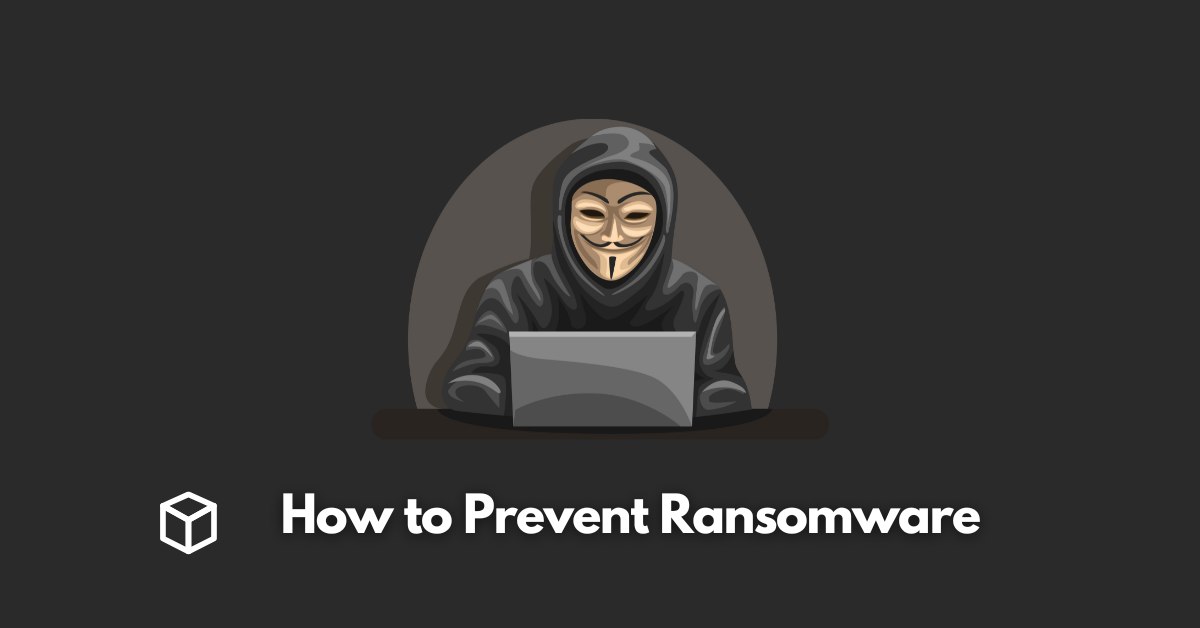Ransomware is a type of malicious software (malware) that encrypts a victim’s files and demands a ransom payment in exchange for the decryption key.
It is a serious problem that affects individuals and organizations of all sizes.
Ransomware attacks can lead to significant financial losses and disruption of business operations.
It is crucial to take proactive measures to prevent an attack from occurring.
Best Practices for Preventing Ransomware
Keep software up to date
Software vulnerabilities can be exploited by attackers to gain access to a device and install ransomware.
It is important to regularly update your operating system, browser, and antivirus software to ensure that you are protected against known vulnerabilities.
Regularly updating all software, including operating systems, browsers, and antivirus programs, is essential to ensure that you have the latest security fixes and features.
Back Up Important Data
A recent backup can help mitigate the damage caused by ransomware by allowing you to restore your files without paying the ransom.
It is recommended to create regular backups and store them in a secure location, such as an external hard drive or a cloud-based storage service.
Further, it is important to verify the integrity of the backup and test restoring it.
Use Reputable Antivirus and Anti-malware Software
Antivirus and anti-malware software can help prevent ransomware from being installed on a device by identifying and blocking malicious software.
Some popular antivirus and anti-malware programs that you can use include Norton, McAfee, and Malwarebytes.
Be cautious when clicking on links or downloading attachments
Attackers often use phishing emails or malicious websites to distribute ransomware.
It is important to be cautious when clicking on links or downloading attachments.
Some of the best tips for identifying and avoiding suspicious links and attachments include not clicking on links from unknown sources, hovering over a link to see the URL before clicking, and being wary of unsolicited attachments.
Use a Firewall
A firewall can help prevent unauthorized access to a device or network by controlling incoming and outgoing network traffic.
Some of the instructions for configuring a firewall include checking the manufacturer’s website for specific instructions, and keeping the firewall updated with the latest security updates.
Use a VPN
VPN encrypts internet traffic, making it more difficult for attackers to intercept and install ransomware.
Popular VPN services include NordVPN, ExpressVPN, and CyberGhost VPN.
What to do if you are Infected with Ransomware
Do not Pay the Ransom
Paying the ransom only encourages attackers, and does not guarantee that your files will be restored.
There is also no way to verify if the attackers will actually provide the decryption key, and in some cases, they may demand additional payments.
Disconnect the infected device from the internet
Disconnecting the infected device from the internet can prevent the ransomware from spreading to other devices or backups.
It also stops the attackers from communicating with the malware on the infected device.
Use your backup to restore your files
Restoring from a recent backup can help you recover your files without paying the ransom.
It is very important to ensure that the backup is not infected with the ransomware before restoring.
Report the attack to the authorities
Reporting the attack can help law enforcement track down the attackers and prevent future attacks.
It also helps to share information about the malware and its tactics with others.
Consult with Experts
A cybersecurity professional can help you remove the ransomware and secure your device or network.
They can also help you assess the damage, restore your files, and implement security measures to prevent future attacks.
Conclusion
In conclusion, ransomware is a serious problem that can lead to significant financial losses and disruption of business operations.
It is crucial to take proactive measures to prevent an attack from occurring, such as keeping software up to date, regularly backing up important data, using reputable antivirus and anti-malware software, being cautious when clicking on links or downloading attachments, using a firewall, and using a VPN.
If an attack does occur, it is extremely important not to pay the ransom, disconnect the infected device from the internet, use a recent backup to restore files, report the attack to the authorities, and consult with experts.
In a nutshell, it is very important for you to take the necessary steps to prevent ransomware and protect your data.
By following the best practices mentioned in this article and being prepared in case of an attack, you can reduce the risk of falling victim to ransomware and minimize the potential damage.




